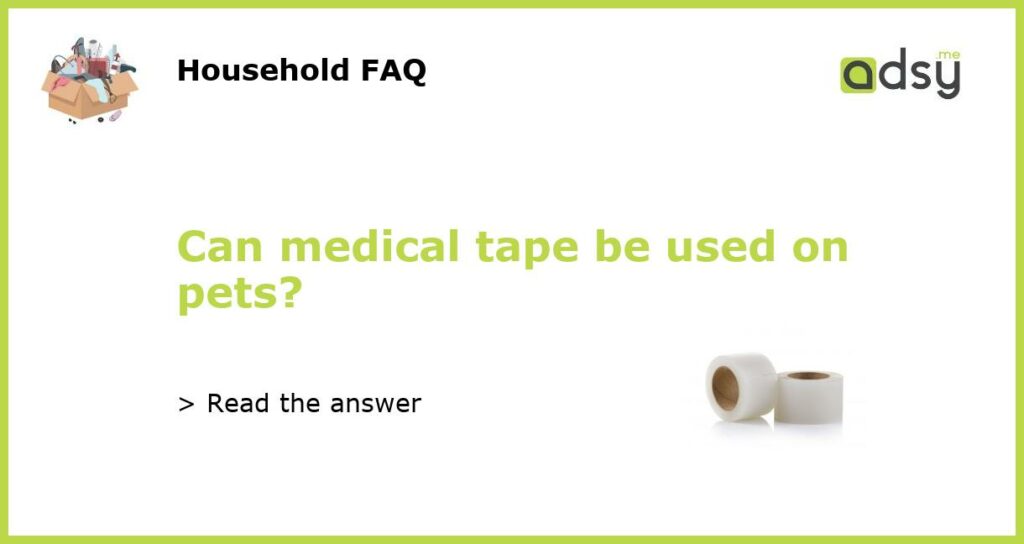What is medical tape and how is it used on humans?
Medical tape is a type of adhesive tape used in medical settings to secure dressings or medical devices to the skin. It is designed to be gentle on the skin, while still providing a strong and lasting hold. Medical tape is commonly used on humans for wound care, to secure catheters or IVs, or to hold splints or braces in place.
What types of medical tape are safe for pets?
While medical tape is primarily made for use on humans, it can also be used on pets in certain situations. However, not all types of medical tape are safe to use on pets. Pet owners should only use hypoallergenic and latex-free medical tape on their pets. These types of tapes are less likely to irritate a pet’s skin or cause an allergic reaction.
What are some common uses of medical tape on pets?
Medical tape can be used on pets for a variety of reasons, including wound dressing, securing catheters or feeding tubes, and immobilizing limbs or joints. It can also be used to hold bandages or gauze pads in place. It’s important to remember that when using medical tape on pets, it should not be too tight or restrict their movement or circulation.
Is it safe to use medical tape on all types of pets?
While medical tape can be used on a variety of pets, there are some considerations that should be taken into account. For example, pet owners should avoid using tape on any areas where their pet could easily remove it, such as the face or paws. Additionally, pets with sensitive skin may react differently to certain types of tape, so it’s important to monitor their skin closely after applying tape.
What should pet owners do if their pet experiences an adverse reaction to medical tape?
If a pet experiences an adverse reaction to medical tape, such as redness, swelling, or irritation, pet owners should remove the tape and contact their veterinarian for further guidance. In some cases, a different type of tape may be recommended, or an alternative method of securing a dressing may be necessary. It’s always best to err on the side of caution and seek the advice of a veterinary professional when it comes to the health and wellbeing of your furry friends.






